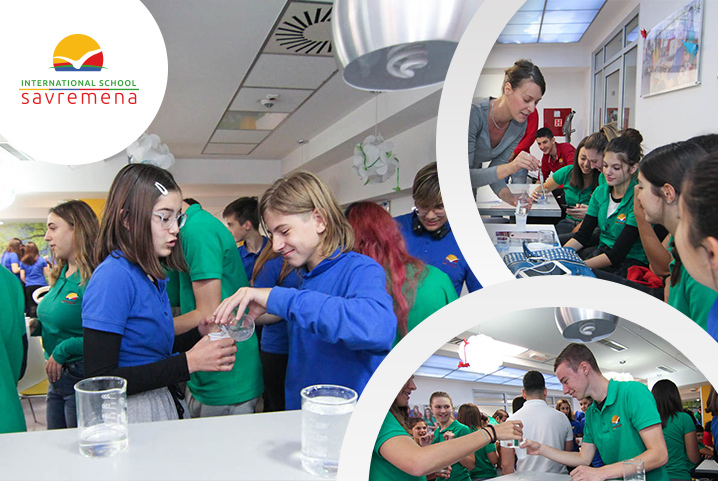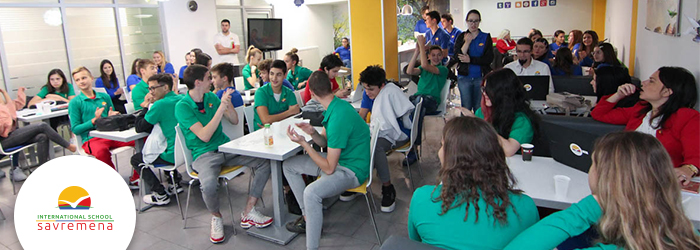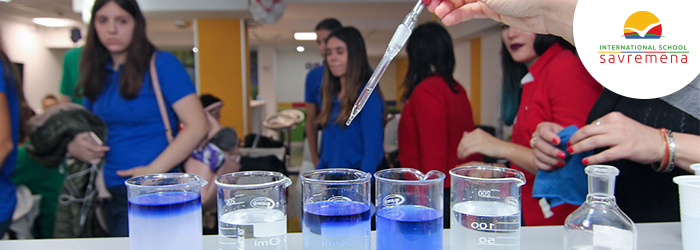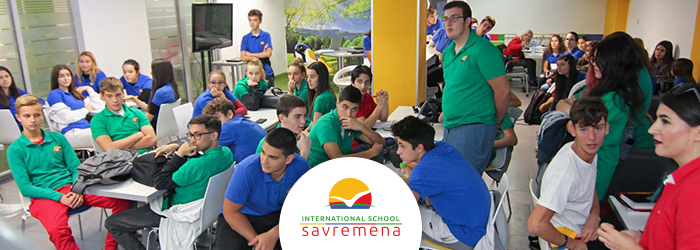
Yet another fun and interesting interdisciplinary lesson was held at International School Savremena. Biology, Chemistry, English and Geography teachers joined forces and gave the students a unique opportunity to explore the topic of viruses and diseases and the way they spread. The lesson was conducted in the school restaurant due to the number of students, as the lesson was attended by Years 10 and 11.

Conducting the experiment – conclusions and discussions
The major purpose of the interdisciplinary lesson in regard to biology was to address the problems arising from infectious diseases, to explain their mechanisms of attacking human organisms and the means of their spreading in human populations.
Chemistry and Biology teachers conducted a chemical experiment in which they showed the students how rapidly and undetectably viruses spread from person to person, and each student participated in the experiment.
While conducting the experiment, Geography and English students addressed the global spreading of viruses and diseases and its effect on the population, and discussed how to raise awareness about the prevention. They also discussed the effect viruses have on population dynamics through a case study of a chosen country.

Students participating in experiment
As a means of conveying the message, they used the colour changing properties of pH indicators, where all the students had colourless solution at the beginning of the class, but a few were "infected" (colourless solution of diluted sodium hydroxide).
Students were asked to mix the solutions when they interacted with each other, after which all were tested by adding a few drops of pH indicator. The solutions of "infected" individuals turned blue. At that moment, chemistry students were asked to explain how pH indicators work and to deduce what colourless solution was given to several "infected" individuals that lead to the colour change.

What are diseases and viruses?
Viruses cause familiar infectious diseases such as the common cold and flu. Viruses are like hijackers. They invade living, normal cells and use those cells to multiply and produce other similar viruses.
Viruses are everywhere
As a conclusion of this interdisciplinary lesson they pointed out that even if we cannot see them, they are around us, and that we must take special care to protect against countless viruses and pathogens that surround us. Especially now since the flu season is just around the corner.
International School Savremena is well-aware of the benefits of interdisciplinary lessons. By combining two or more disciplines, we can create a powerful learning experience. Interdisciplinary lessons emphasise integrative learning, critical thinking and creative problem solving.
Check out more interesting photos in our gallery!

















